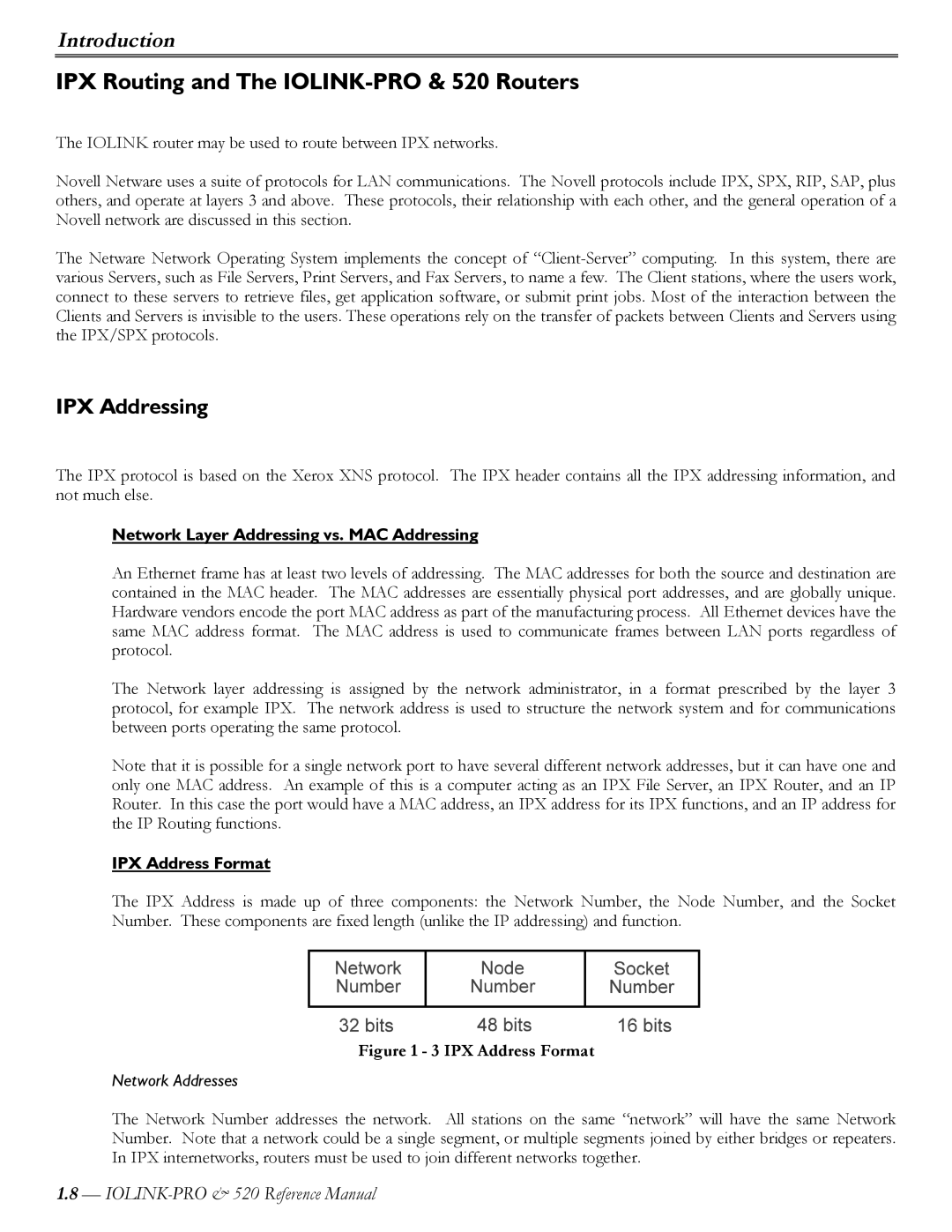
Introduction
IPX Routing and The IOLINK-PRO & 520 Routers
The IOLINK router may be used to route between IPX networks.
Novell Netware uses a suite of protocols for LAN communications. The Novell protocols include IPX, SPX, RIP, SAP, plus others, and operate at layers 3 and above. These protocols, their relationship with each other, and the general operation of a Novell network are discussed in this section.
The Netware Network Operating System implements the concept of
IPX Addressing
The IPX protocol is based on the Xerox XNS protocol. The IPX header contains all the IPX addressing information, and not much else.
Network Layer Addressing vs. MAC Addressing
An Ethernet frame has at least two levels of addressing. The MAC addresses for both the source and destination are contained in the MAC header. The MAC addresses are essentially physical port addresses, and are globally unique. Hardware vendors encode the port MAC address as part of the manufacturing process. All Ethernet devices have the same MAC address format. The MAC address is used to communicate frames between LAN ports regardless of protocol.
The Network layer addressing is assigned by the network administrator, in a format prescribed by the layer 3 protocol, for example IPX. The network address is used to structure the network system and for communications between ports operating the same protocol.
Note that it is possible for a single network port to have several different network addresses, but it can have one and only one MAC address. An example of this is a computer acting as an IPX File Server, an IPX Router, and an IP Router. In this case the port would have a MAC address, an IPX address for its IPX functions, and an IP address for the IP Routing functions.
IPX Address Format
The IPX Address is made up of three components: the Network Number, the Node Number, and the Socket Number. These components are fixed length (unlike the IP addressing) and function.
Figure 1 - 3 IPX Address Format
Network Addresses
The Network Number addresses the network. All stations on the same “network” will have the same Network Number. Note that a network could be a single segment, or multiple segments joined by either bridges or repeaters. In IPX internetworks, routers must be used to join different networks together.
1.8—
